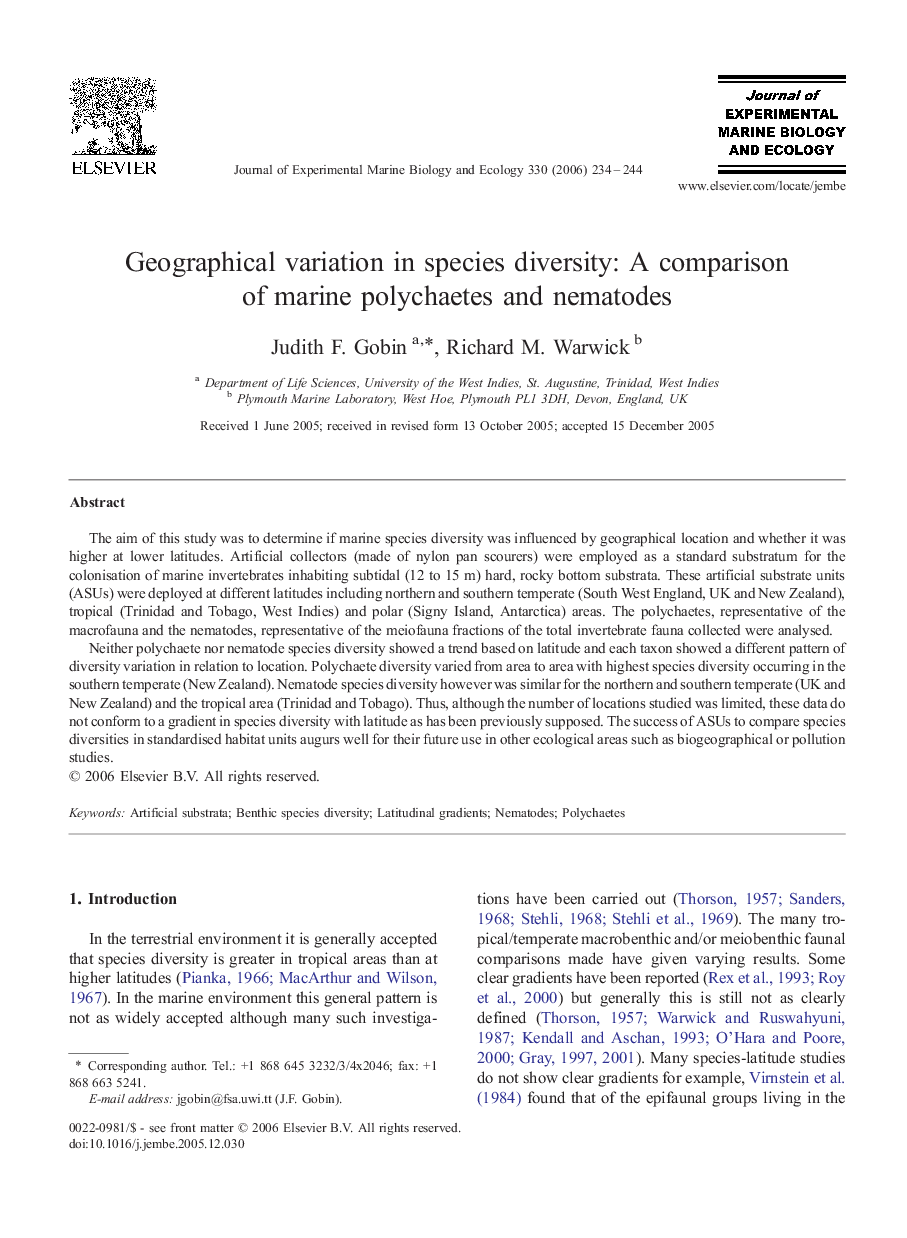| Article ID | Journal | Published Year | Pages | File Type |
|---|---|---|---|---|
| 4398221 | Journal of Experimental Marine Biology and Ecology | 2006 | 11 Pages |
The aim of this study was to determine if marine species diversity was influenced by geographical location and whether it was higher at lower latitudes. Artificial collectors (made of nylon pan scourers) were employed as a standard substratum for the colonisation of marine invertebrates inhabiting subtidal (12 to 15 m) hard, rocky bottom substrata. These artificial substrate units (ASUs) were deployed at different latitudes including northern and southern temperate (South West England, UK and New Zealand), tropical (Trinidad and Tobago, West Indies) and polar (Signy Island, Antarctica) areas. The polychaetes, representative of the macrofauna and the nematodes, representative of the meiofauna fractions of the total invertebrate fauna collected were analysed.Neither polychaete nor nematode species diversity showed a trend based on latitude and each taxon showed a different pattern of diversity variation in relation to location. Polychaete diversity varied from area to area with highest species diversity occurring in the southern temperate (New Zealand). Nematode species diversity however was similar for the northern and southern temperate (UK and New Zealand) and the tropical area (Trinidad and Tobago). Thus, although the number of locations studied was limited, these data do not conform to a gradient in species diversity with latitude as has been previously supposed. The success of ASUs to compare species diversities in standardised habitat units augurs well for their future use in other ecological areas such as biogeographical or pollution studies.
